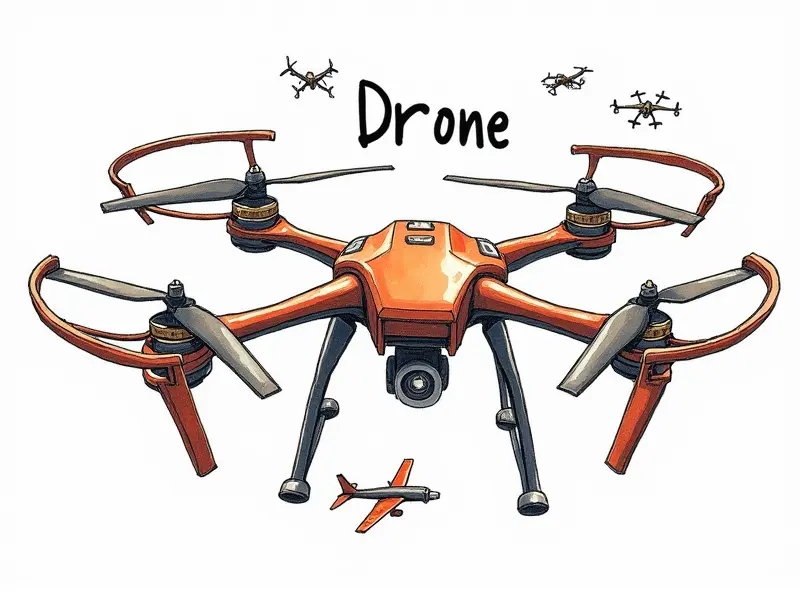Are RC quadcopters safe?

Are RC Quadcopters Safe to Fly?
The question of whether remote control (RC) quadcopters are safe to fly is a common concern among both beginners and experienced pilots. While these devices offer an exhilarating experience, it's crucial to understand the potential risks involved.
RC Quadcopter Safety Tips for Beginners
For those new to RC quadcopters, safety should be your top priority. Here are some essential tips:
- Read the Manual: Familiarize yourself with the manufacturer's guidelines and recommended settings.
- Practice in Open Areas: Start flying in open spaces away from people, buildings, and other obstacles.
- Use a Simulator: Many RC quadcopter manufacturers offer flight simulators to help you get comfortable with the controls before taking your drone out.
Flying Safely with RC Quadcopters
To ensure safe flying, follow these best practices:
- Check Weather Conditions: Avoid flying in high winds or rain to prevent damage and loss of control.
- Perform Pre-Flight Checks: Inspect your quadcopter for any loose parts or damaged components before each flight.
- Stay Within Legal Limits: Be aware of local regulations regarding drone usage, including no-fly zones and altitude restrictions.
Common Hazards in RC Quadcopter Flying
Flying an RC quadcopter comes with several hazards that you should be aware of:
- Collision Risks: Drones can easily collide with obstacles, causing damage to the drone and potentially injuring people.
- Battery Issues: Overheating or malfunctioning batteries can lead to fires or explosions.
- Loss of Control: Signal interference or battery failure can result in loss of control over your quadcopter.
Understanding the Dangers of RC Quadcopters
The dangers associated with RC quadcopters are real and should not be underestimated. These include:
- Injury Risks: Fast-moving rotors can cause severe injuries if they come into contact with skin or other body parts.
- Property Damage: Drones can damage property, especially in crowded areas where there are many obstacles.
- Data Privacy Concerns: Unauthorized aerial photography and video recording can infringe on people's privacy rights.
Ensuring Safety When Using RC Quadcopters
To mitigate the risks associated with flying RC quadcopters, take these precautions:
- Wear Protective Gear: Use goggles and gloves to protect yourself from potential injuries.
- Use GPS Locks: Enable GPS locks on your drone to prevent it from drifting out of control.
- Carry a Fire Extinguisher: Always have a small fire extinguisher handy in case of battery fires or other emergencies.
How to Stay Safe While Operating RC Quadcopters
Safety is paramount when operating any kind of drone. Here are some additional tips:
- Stay Informed About Regulations: Keep up-to-date with the latest rules and guidelines for flying drones in your area.
- Use Quality Equipment: Invest in high-quality components to reduce the risk of malfunctions or failures during flight.
- Practice Regularly: The more you fly, the better you'll become at handling unexpected situations and maintaining control over your drone.
Is It Safe to Use RC Quadcopters?
The safety of using RC quadcopters largely depends on how they are operated. By following proper guidelines and taking necessary precautions, the risks can be significantly reduced. However, it's important to acknowledge that accidents can still happen.
Avoiding Risks in RC Quadcopter Flying
To avoid common pitfalls when flying RC quadcopters:
- Plan Your Flights Carefully: Always scout the area beforehand and plan your flight path to minimize risks.
- Use Reliable Batteries: Opt for high-quality batteries that are less likely to malfunction or overheat.
- Stay Alert: Keep a constant eye on your drone's status during the entire flight, and be ready to intervene if necessary.
Understanding RC Quadcopter Safety
Safety is an ongoing process when it comes to flying RC quadcopters. It involves not only adhering to safety guidelines but also continuously learning about new technologies and best practices in the field.
How Safe Are FPV Racing Drones?
First-person view (FPV) racing drones present unique challenges due to their high speeds and aggressive flying styles. While they can be thrilling, they require even more stringent safety measures:
- Use Protective Gear: Wear full-face helmets and protective suits to prevent injuries from crashes.
- Practice in Controlled Environments: Start with indoor or designated outdoor tracks before venturing into open spaces.
- Follow Racing Rules: Adhere to the safety protocols established by FPV racing organizations to ensure fair and safe competition.
Conclusion
Flying RC quadcopters can be a thrilling hobby, but it requires careful consideration of safety measures. By following best practices, staying informed about regulations, and using quality equipment, you can significantly reduce the risks associated with flying these devices. Remember that safety is everyone's responsibility, so always prioritize caution over excitement.

